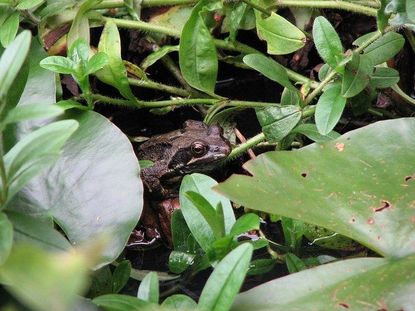Heirloom Squash Plants - History Of Gete Okosomin Squash


The Gete Okosomin squash has two very interesting stories. One of them is true. The other isn't, and that's the one that's made it famous. But even the true story, while a little less click-baity, is fascinating, and a testament to the long relationship between people and gardening. So let's look at the real history of Gete Okosomin squash"¦ and we'll look a little bit at the fake history, too.
Gete Okosomin Heirloom Squash Origins - The Wrong Story
The name Gete Okosomin literally means "big old squash." It's a fitting title because the long orange fruits frequently tip the scales at 30 pounds (13.6 kg.). The plants became very well known a few years ago when a tale about their "discovery" started making the rounds on the internet. According to this story, a 2008 archeological dig in Wisconsin unearthed a small clay vessel containing seeds that were carbon dated to 850 years ago. The dormant seeds were planted and they grew into this "lost" squash. It's a fun idea, and one that sparks the imaginations of seed savers and gardeners. Just imagine"¦ a Jurassic Park of long extinct squashes! But, alas, it isn't true.
Real History of Gete Okosomin Squash
The Gete Okosomin squash isn't long extinct. Quite the opposite, in fact. Through careful cultivation and hand pollination, the Miami people of Indiana have been growing it and refining it for thousands of years. That means the variety is actually much older than the sensational headlines suggest! It's unclear exactly where the clay vessel story comes from, but the squash's wider popularity can seem to be traced to David Wrone, a professor at the University of Wisconsin, who was gifted the seeds by Miami Nation gardeners. Wrone began growing the squash and spreading the seeds around, giving some to the White Earth Seed Library. Today, the seeds are available to the public. The fruits are massive with tasty, nutty flesh and nutritious seeds, and well worth a try for the adventurous gardener.
Gardening tips, videos, info and more delivered right to your inbox!
Sign up for the Gardening Know How newsletter today and receive a free download of our most popular eBook "How to Grow Delicious Tomatoes."

The only child of a horticulturist and an English teacher, Liz Baessler was destined to become a gardening editor. She has been with Gardening Know how since 2015, and a Senior Editor since 2020. She holds a BA in English from Brandeis University and an MA in English from the University of Geneva, Switzerland. After years of gardening in containers and community garden plots, she finally has a backyard of her own, which she is systematically filling with vegetables and flowers.
-
 How To Grow Garden To Table: A Guide For Home Cooks
How To Grow Garden To Table: A Guide For Home CooksWhat could be better than a meal that comes directly from garden to table? Show off your gardening and culinary skills with the very freshest food.
By Bonnie L. Grant
-
 Want a Backyard Mini Orchard? Create Your Own Container Orchard
Want a Backyard Mini Orchard? Create Your Own Container OrchardEasier to care for in small spaces, a backyard mini-orchard makes sense for busy gardeners and juicy fruit is the reward.
By Teo Spengler